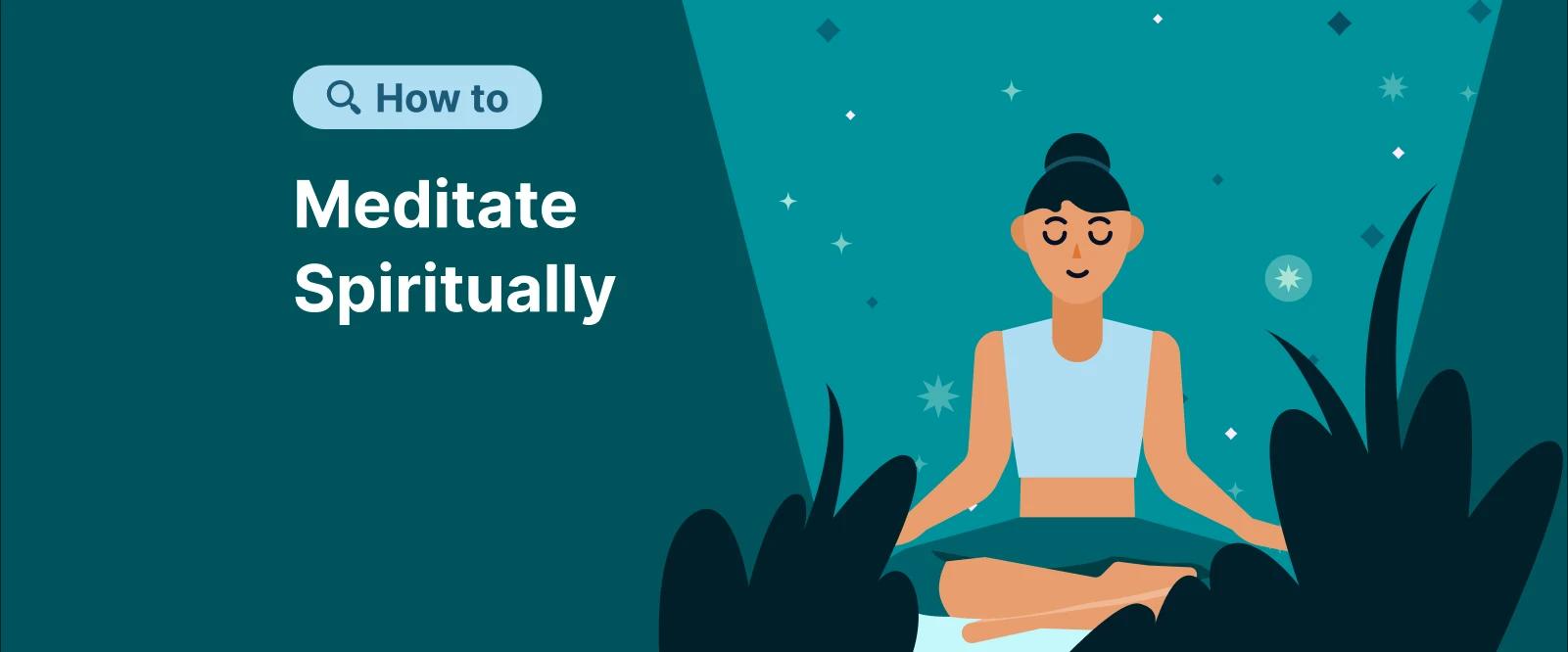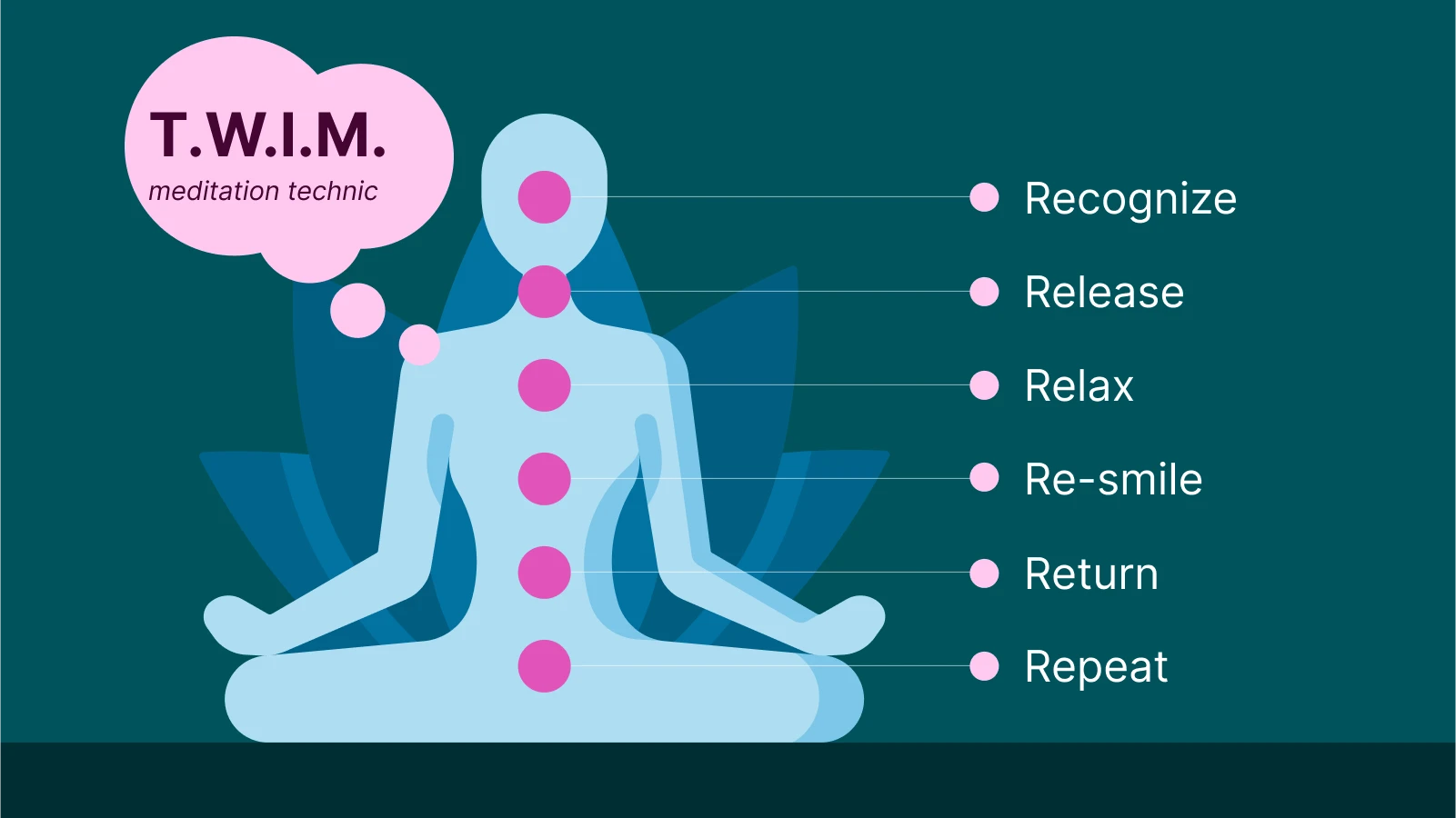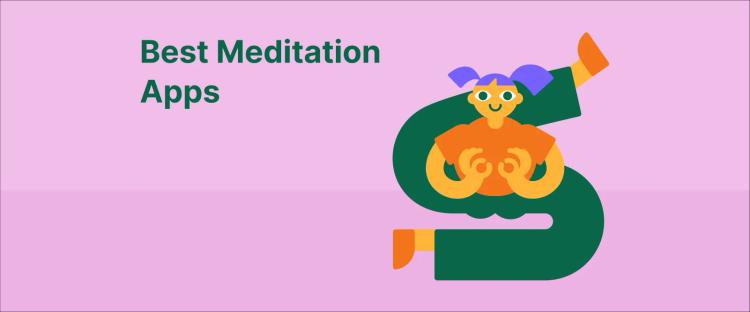As a meditation teacher, podcast host, and author of two meditation books, I've seen the profound transformation that occurs when someone learns how to meditate spiritually.
In this article, I'll guide you through proven meditation techniques — the same ones I share with my own students — and answer the most common questions from beginners starting their meditation practice. Whether you're seeking inner peace or a deeper spiritual connection, the right approach makes all the difference.
That's why I recommend pairing your practice with wisdom from the world's leading meditation teachers. Headway book summaries distill key insights from books like 'The Power of Now', 'The Untethered Soul', and 'Mindfulness' into 15-minute reads you can absorb anytime, anywhere.
Try Headway today to maximize learning in small pockets of time throughout your day.
How to meditate spiritually: Quick answer
Basics you need to begin your meditation practice:
A comfortable place to sit.
A quiet spot.
A calm state of mind to focus on breathing.
A mantra, prayer, or intention.
The mindset to observe without judgment.
The key: Spiritual meditation is less about perfect technique and more about intention, openness, and showing up consistently.
Keep reading for a detailed guide on spiritual meditation!
10 steps to mastering spiritual meditation
Spiritual meditation doesn't have to be complicated. Here is what I teach my students who are just starting their spiritual journey:
Sit quietly in a comfortable position with your spine tall and body relaxed.
Close your eyes and take three deep breaths to enter a meditative state.
Set an intention for your meditation session, such as "I open myself to peace" or "I connect to my higher self."
Focus on your breath as it moves in and out. Let it be natural.
Call in spiritual presence – this could be God, Source, Universe, or simply your own inner self.
Repeat a mantra or prayer, silently or out loud, such as "I am connected" or "Let me be still." Or just sit, listen, and see what comes up.
Observe without judgment. Allow your thoughts to come and go like clouds passing in the sky.
Notice the energy. Observe any sensation, warmth, or light that comes to you.
Stay in the moment for 5–20 minutes, or as long as it fits within your routine for the day.
Finish with appreciation. Say "thank you" for your experience, even if it did not feel perfect.
Some students find it helpful to follow a guided meditation for the first time. This gives them a structure and gentle encouragement as they build confidence in their practice.
Want to go deeper? Explore the Headway summary of 'The Untethered Soul' by Michael A. Singer for a deeper understanding of how to let go and tune in.
Six popular spiritual meditation techniques to try next
There are many paths up the same mountain. Investigating various meditation techniques can help you find what speaks to you, often with surprising results.
1. Mantra-based meditation
Repetitive sacred words or phrases can help settle your mind and focus your awareness on spiritual connection. Mantras may be traditional (like "Om Shanti") or personal (like "I am light").
2. Chakra meditation
This technique involves focusing on energy centers in the body (chakras) to balance spiritual energy. Visualization, color, and breathwork are the most popular. Each chakra is associated with different aspects of well-being, from groundedness to spiritual expansion.
3. Christian spiritual meditation
Grounded in scripture and prayer, this approach invites reflection on spiritual texts, listening for divine guidance, and communing with God. This form of spiritual practice is especially resonant for those who seek to integrate their faith with meditation.
4. Visualization and affirmations
Using visualization and affirmations can support your spiritual meditation practice by activating your imagination and intention. Picture light filling your body or repeat phrases like "I am whole" or "I am one with the universe."
5. T.W.I.M.
Two powerful practices that support spiritual meditation are T.W.I.M. (Tranquil Wisdom Insight Meditation) and Metta Meditation. While both are rooted in Buddhist traditions, they offer distinct approaches that support spiritual growth in unique ways.
T.W.I.M., which I learned directly from Bhante Vimalaramsi and is one of my personal favorites, is a form of meditation that emphasizes relaxed awareness, loving-kindness, and the release of craving and clinging through the "6Rs" process:
Recognize
Release
Relax
Re-smile
Return
Repeat
What stood out to me about T.W.I.M. was its accessibility and emphasis on joy — it opened up so much for me spiritually. Practicing it with Bhante felt like stepping into a spaciousness I hadn't accessed before, and it helped me let go of striving in my meditation practice.
6. Metta meditation
Metta Meditation, often called loving-kindness meditation, involves sending well-wishes and compassion to yourself and others through phrases such as "May I be happy. May you be safe. May we live with ease."
Unlike T.W.I.M., which uses Metta as a foundation but integrates insight practices, traditional Metta stays focused on radiating love outward.
These methods support a spiritual path by anchoring the practitioner in compassion, presence, and emotional openness — core elements of any spiritual meditation practice.
They remind us that spiritual awakening is not about withdrawing from the world, but about expanding our hearts to include it fully.
What is spiritual meditation?
Spiritual meditation is a gentle invitation to connect with your higher self, cultivate inner stillness, and enter a meditative state where you feel present. All forms of meditation promote mindfulness, but spiritual meditation is distinctive because it:
Connects you with a higher power or your higher self.
Employs prayer or intention, affirmations, or visualization as a way to deepen inner awareness.
Encourages surrender, trust, and letting go of mental chatter.
Three types of meditation: Which one is right for you?
Spiritual meditation seeks a connection to something sacred. It's rooted in presence, prayer, and surrender.
Mindfulness meditation trains awareness and non-judgment of the present moment. It's secular or Buddhist in origin.
Transcendental meditation uses a silent mantra to transcend thought. It's a structured and trademarked technique.
Does spiritual meditation have to be religious?
One of the most common questions I hear from students is whether spiritual meditation is inherently religious. The answer is no — spiritual meditation does not have to be religious, and meditation itself is not tied to any single belief system.
While meditation has roots in many religious and spiritual traditions, including Buddhism, Hinduism, Christianity, and Judaism, it is ultimately a universal human practice. You can be spiritual without being religious, and your meditation practice can reflect that.
Spiritual meditation is about forming a deeper connection with your inner self and the world around you — whatever that means for you personally. It might include God, the universe, nature, or simply your own inner wisdom. It's about cultivating presence, awareness, and inner peace — not about adhering to a specific doctrine.
Whether you follow a religion or not, spiritual meditation is a space where anyone can explore meaning, consciousness, and stillness on their own terms.
Key benefits of spiritual meditation
Spiritual meditation enhances self-awareness, reduces stress, and fosters inner peace.
Some of my favorite benefits of spiritual practice include:
Heightened self-awareness – You learn to discern and listen to your inner self and intuition.
Emotional healing – Your suppressed emotions come to the surface through self-reflection.
Inner peace – You develop a sense of calm in your body, mind, and spirit.
Connection to purpose – Helps clarify your direction and purpose in life.
Decreased anxiety and stress – Your nervous system calms down and anchors in the present.
Spiritual growth – Your spiritual connection to a higher self or divine source grows stronger.
Increased compassion – Empathy, kindness, and non-judgment navigate you.
Improved mental health – You enhance your emotional regulation and support your overall well-being.
Connection to daily life – You appreciate the sacredness and significance of your life.
Regular meditation can help you find clarity in chaos and make peace with the present moment.
Whether you're seeking inner peace or self-realization, the benefits of meditation ripple through every aspect of your wellness journey and improve your self-awareness.
Common spiritual meditation challenges (and how to overcome them)
Even seasoned practitioners experience difficulties. Here are some common questions I hear from beginners and my answers:
What if I can't stop my thoughts during meditation?
You don't have to. The goal isn't silence but awareness. Let thoughts arise and pass without attachment.
What should I do if I don't feel anything during meditation?
Stay consistent. Spiritual experiences often unfold gradually. Just show up for your meditation practice with an open heart.
Can I meditate spiritually without religion?
Absolutely. You don't need to follow a religion to connect to your inner self or pursue a spiritual path.
How long should I meditate spiritually?
Start with 5–10 minutes, especially if it's your first time. Over time, aim for 15–20 minutes daily to deepen your connection.
What is the best time of day to meditate spiritually?
Morning is often ideal to set your intention for the day. But any quiet space and time during your daily life works.
How do I know if my practice is working?
If you feel more grounded, peaceful, or aware — even slightly — your meditation practice is serving you.
For more support, check out the Headway summary of 'Mindfulness' by Mark Williams and Danny Penman to help you overcome distractions and develop presence.
Nine ways to deepen your spiritual meditation practice
Once you've built a regular meditation practice, try these methods to go deeper:
Practice surrender: Let go of needing to "do it right" and trust the experience.
Journal after each session: Write down your insights, spiritual awareness, or moments of clarity.
Meditate in nature: The natural world builds spiritual connection and spiritual awareness.
Try longer sessions: Increase time gradually to level up your meditation practice.
Add breathwork or sound: Tools like pranayama, singing bowls, or guided meditation apps support a deeper connection.
Read spiritual texts: Reflect on teachings from Jon Kabat-Zinn's 'Wherever You Go, There You Are' or other wisdom sources.
Build a sacred space: Create a quiet space in your home with candles, cushions, or meaningful objects to support consistency.
Join a community: Practicing with others can expand your perspective and offer encouragement.
Teach what you learn: Sharing with others deepens your own spiritual growth.
Five must-read spiritual books to support your practice
Here are five books on spirituality that have supported both my journey and those of my students:
'The Power of Now' by Eckhart Tolle – Learn how presence transforms suffering into peace.
'The Untethered Soul' by Michael A. Singer – A guide to releasing inner limitations.
'Wherever You Go, There You Are' by Jon Kabat-Zinn – Mindfulness made simple and spiritual.
'Mindfulness' by Mark Williams and Danny Penman – Discover the sacred in everyday life.
'Becoming Supernatural' by Dr. Joe Dispenza – Blend neuroscience and mysticism to tap into infinite potential.
Find these book summaries on Headway in text and audio formats and absorb their transformative teachings in 15 minutes or less!
Start your spiritual journey with Headway book summaries
Spiritually meditating is not a way to avoid life’s problems. It is encountering them from a place of presence, grace, and spiritual grounding. However, when you're learning how to meditate spiritually, taking the time to read entire spiritual texts feels overwhelming.
That's where Headway comes in. Use it as your personal meditation app for powerful insights from dozens of transformative books. Each summary gives you the core teachings, practical exercises, and key takeaways you need to deepen your meditation practice — on your terms, at your pace.
And remember: It's okay to start slow. You don't need hours of silence or a perfect setup to feel the impact of a meditation session. What matters most is showing up with sincerity.
Download Headway today to turn small moments into spiritual growth!
Frequently asked questions on how to meditate spiritually
What is the golden rule of meditation?
The golden rule of meditation is to observe without judgment. Let thoughts, feelings, and sensations arise naturally without labeling them as "good" or "bad." There's no perfect meditation — only presence. Show up consistently, stay gentle with yourself, and trust that each session serves your spiritual growth, even when it feels imperfect.
What not to do while meditating?
Don't force silence or fight your thoughts — this creates tension. Avoid meditating immediately after a heavy meal or when you're extremely tired or in noisy, uncomfortable spaces. Don't judge yourself for a "wandering mind" — it's natural. Skip meditation if you're feeling overly agitated and try breathwork or movement to settle your nervous system.
How do I control my mind while meditating?
You don't control your mind — you observe it. When thoughts arise, acknowledge them without attachment and gently return to your breath or mantra. Think of thoughts as clouds passing through the sky of your awareness. The practice isn't stopping thoughts; it's noticing them without getting swept away. This gets easier with consistent practice.
What is a mantra in spiritual meditation?
A mantra is a sacred word or phrase repeated silently or aloud to anchor your awareness and quiet mental chatter. It can be traditional (like "Om" or "So Hum") or personal (like "I am peace"). Repeating a mantra helps focus the mind, deepen spiritual connection, and create a meditative state that supports inner stillness.
How do I start chakra meditation?
Sit comfortably and focus on one energy center at a time, starting from the root chakra (base of spine) up to the crown (top of head). Visualize each chakra's associated color, breathe into that area, and repeat affirmations like "I am grounded" or "I am open." Spend 2-3 minutes per chakra, moving upward through all seven.
What is a spiritual awakening?
A spiritual awakening makes you more aware of your true self, beyond ego and external identity. It often brings greater peace and a connection to something larger than oneself. Awakenings happen gradually through meditation practice or suddenly through life experiences. Each person's journey is unique.
How do I connect to my higher self?
By meditating, you are connecting with your higher self for inner guidance. Sit comfortably, breathe deeply, and silently ask your question. Answers will come, so don't force them. They come as feelings, images, or intuitive knowing. Reflection or journaling afterward will help clarify these messages.










